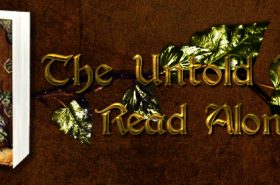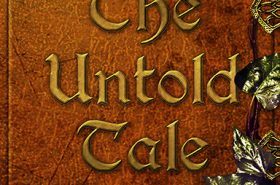Next up on our tour of literary genres is Horror. (Because of the plethora of subgenres Science Fiction features, I’ve decided to make it the finale of this series, so you’ll see it in about two more weeks.)
A good Horror should unnerve, freak out and otherwise haunt you long after you finish it. Featuring ghosts and vampires, psychopaths and serial killers, Horror preys on our fears, exploring the darker side of humanity. But unlike some of the other genres, Horror’s true focus isn’t on the content, so much as the delivery. Horror would be nothing more than General Fiction, Fantasy or Sci-Fi without one very key ingredient — suspense. The creepy, atmospheric use of this storytelling technique (different from the way it’s used in a Thriller) has one goal — to elicit fear from the reader. It feeds on the adrenaline rush we get when our fight or flight response kicks in, spinning tales that leave us uncomfortable and scared stiff.
But even though books in this genre have to conform to this universal requirement, they can vary widely in their approach. (No surprise there, otherwise it wouldn’t be part of my series on subgenres, right?) My research shows 15 different subgenres in Horror. So let’s check them out.
Comic Horror
Gallows humor and black comedy are staples of this subgenre, which strives to mix comedy with the elements of Horror. Sarcasm and satire run rampant, pairing things meant to terrify with the ridiculous. Stories in this genre are often predictable, placing characters in laughable situations the audience sees coming a mile away. The Scary Movie franchise is a prime example, as are The Ghostbusters, Buffy the Vampire Slayer, Shaun of the Dead, and the novels of Christopher Moore.
Creepy Kids
This may seem like a weird name for a subgenre, but if you think about it, how many times have you seen creepy children featured in a Horror film? It doesn’t always have to be children, though; it can be anything that represents innocence gone twisted. Possessed toys (Chucky) and pets (Stephen King’s Cujo) also qualify. I think there’s something inherently horrifying about the combination of innocence and pure evil that makes this genre guaranteed to give you the heebie-jeebies.
Dark Mystery/Noir
This subgenre pulls from sister genre Mystery to create gritty, dark, crime-driven stories. Typically set against an urban backdrop rife with moral ambiguity, a Dark Mystery/Noir will feel oppressive, paranoid and dirty. Plots often contain themes of corruption, obsession, and revenge. Examples include The Midnight Road by Tom Piccirilli and Procession of the Dead by Darren Shan.
Gothic
This is what people think of when they think about “classic” Horror. Before Horror became a recognized genre, Gothic was used to describe this style of literature. But once other variations of the horrifying came into existence, the genre name changed and Gothic became merely a subgenre. (Note: This is not the same thing as “Goth,” which is a subculture and not a literary genre.)
Thematically, novels in this subgenre contain characters who feel trapped. It doesn’t matter if that’s internally or externally. The settings are often desolate, ruined places (like castles and graveyards) and there’s a heavy emphasis on the supernatural. Bram Stoker’s Dracula, Mary Shelley’s Frankenstein, Robert Louis Stevenson’s Strange Case of Dr Jekyll and Mr Hyde and everything by Edgar Allan Poe are classic examples everyone knows. But Anne Rice’s The Vampire Chronicles, The Crow movies, and even Batman, also fall under this heading.
Hauntings
This is an easy one. Hauntings = ghosts, spirits, demons, poltergeists and other supernatural, scary phenomena. There really isn’t any more to it than that. If your book features any of these things, it’s likely to fall here.
Historical
We seem to see one of these subgenres in every genre. I wonder why they haven’t just dubbed it an official genre all on its own yet?
Anyway, a Historical Horror is exactly like it sounds — a Horror set in a recognizable, historical setting. That’s the only requirement, so there’s not much point elaborating, except to say that I happen to know REUTS Publications will be releasing an excellent novel under this category in the near future. So if you’re a fan of this subgenre, keep an eye out for the official announcement! 😉
Psychological
These are some of the most terrifying stories out there. Where the other subgenres usually focus on an external, alien form of evil, Psychological Horror illuminates the shadowy corners of our own minds, relying on the character’s emotions, fears and mental instability to create tension. These are often uncomfortable tales that prey on emotional vulnerabilities and insecurities we all harbor but choose to deny. Plot twists are common here, as are unreliable narrators, and heavy use of confusion, leaving the reader wondering what’s happening as much as the character is. Because of this attention to subtlety, this subgenre is the closest cousin to Thriller. Notable examples include The Others, The Ring, and Stephen King’s The Shining.
Quiet Horror
If Psychological Horror takes the cake for highest use of suspense, Quiet Horror wins for subtlety. This is a subgenre I don’t think I’ve ever encountered. It’s a light form of Horror, where only the atmosphere and tone provoke fear, rather than gore, violence or explicit descriptions. If I understand it correctly, the main emotion conveyed is one of dread or anxiety rather than outright terror. Unfortunately, I can’t seem to find any well-known examples of this subgenre, so if someone knows of a few, please feel free to share in the comments below.
Extreme Horror
At the complete opposite end of the spectrum from Quiet Horror is Extreme Horror — aka Splatter, Slasher, Grindhouse, and Visceral. All of these variations focus on one thing — gore. If you want your Horror bloody and violent with a huge body count, this is your subgenre. I think we’re all familiar with Slasher films, but what are some literary examples? American Psycho by Bret Easton Ellis and the work of Edward Lee comes to mind.
Supernatural Menace
I’m pretty sure we can all guess what this subgenre is about. That’s right — creatures. Whether it be the Swamp Thing, Dracula, The Wolf-Man, It, or some other creepy non-human, this is where you’ll find them. I don’t think we need more explanation than that, do you?
Weird Tales
Believe it or not, this subgenre was birthed from a magazine bearing the same name. You don’t see that every day, huh? These stories defy any other classification except strange. Usually melding concepts from Fantasy, Sci-Fi and Horror into a slipstream blend, Weird Tales are just that — weird. Notable examples include the work of Clive Barker and H. P. Lovecraft, as well as The Twilight Zone.
Lovecraftian
Yep, as in the H. P. Lovecraft I just listed under Weird Tales. A pioneer of the Horror genre, Mr. Lovecraft has inspired an almost cult-like fanaticism around his work, warranting his own special subgenre. Work featured here has to bear obvious influences from Lovecraft’s work, mimicking his distinct stylistic flare and pessimism and usually piggy-backing on one of his creations.
Dark Fantasy
Well, look at that, it’s my favored subgenre again! Since this is a cross-breeding of Fantasy and Horror, it’s only right it should be featured here as well. (No, I didn’t make that executive decision. The internet did. 😉 )
Dark Fantasy is grittier than its more traditional Fantasy brethren, dealing with the nastier bits of humanity’s psyche. There can be (and often is) a significant amount of violence and gore and it usually contains themes meant to make a reader slightly uncomfortable. So even if there are no vampires, werewolves, demons, etc, a novel can still be classed Dark Fantasy, simply by its voice and subtext. How is this different than say, Gothic, Hauntings or Supernatural Menace? It’s not really. Except here the fantastical elements lean more towards the lighter stance of Fantasy, meaning that the creatures don’t have to be as purely evil as typically seen in Horror. Dark Fantasy pulls most from Psychological Horror, infusing the heightened tension and uncomfortable emotional vulnerabilities into a traditional Fantasy setting.
Occult
This subgenre is similar to Supernatural Menace in that it often involves a supernatural element. But here, that supernatural element has to be based on a real religious belief system or folklore. Witchcraft, Voodoo and frightening mythological creatures like the Onryo (a Japanese “vengeful ghosts” legend and featured in The Ring) are all typically found here.
Religious Horror
Religious Horror really should be called Christian Horror, as everything non-Christian falls under the Occult subgenre. Religious Horror centers on the very specific ideology of Christianity, so think devils, demons, Satan, etc. Stories in this subgenre will have heavy religious overtones, with the plot often boiling down to the supernatural battle between good and evil (God vs. the Devil). The Exorcist is a prime example of this kind of fiction.
And there you have it; 15 ways to completely freak yourself out and bring on nightmares. Personally, I never really thought I was a fan of Horror, but reading through these, I realize I’m a bigger fan of it than I thought. I always knew Dark Fantasy was on the fence between Fantasy and Horror, I just never realized I had one foot on either side. Now that I know, I may have to meander down the Horror aisle in Barnes & Noble more often. How about you? Are more of your favorite literary reads falling under Horror than you expected?
**Another post syndicated from Senior Editor Kisa Whipkey’s personal blog, Nightwolf’s Corner**




Eldon Robison
A possible good – or best – example of quiet horror: Green Tea, a story by Joseph Sheridan le Fanu.
Horror Genre Lover
Another good example of quiet horror could be Absentia, brillaint psychological thriller. Not much hapenning, but very heavy atmosphere